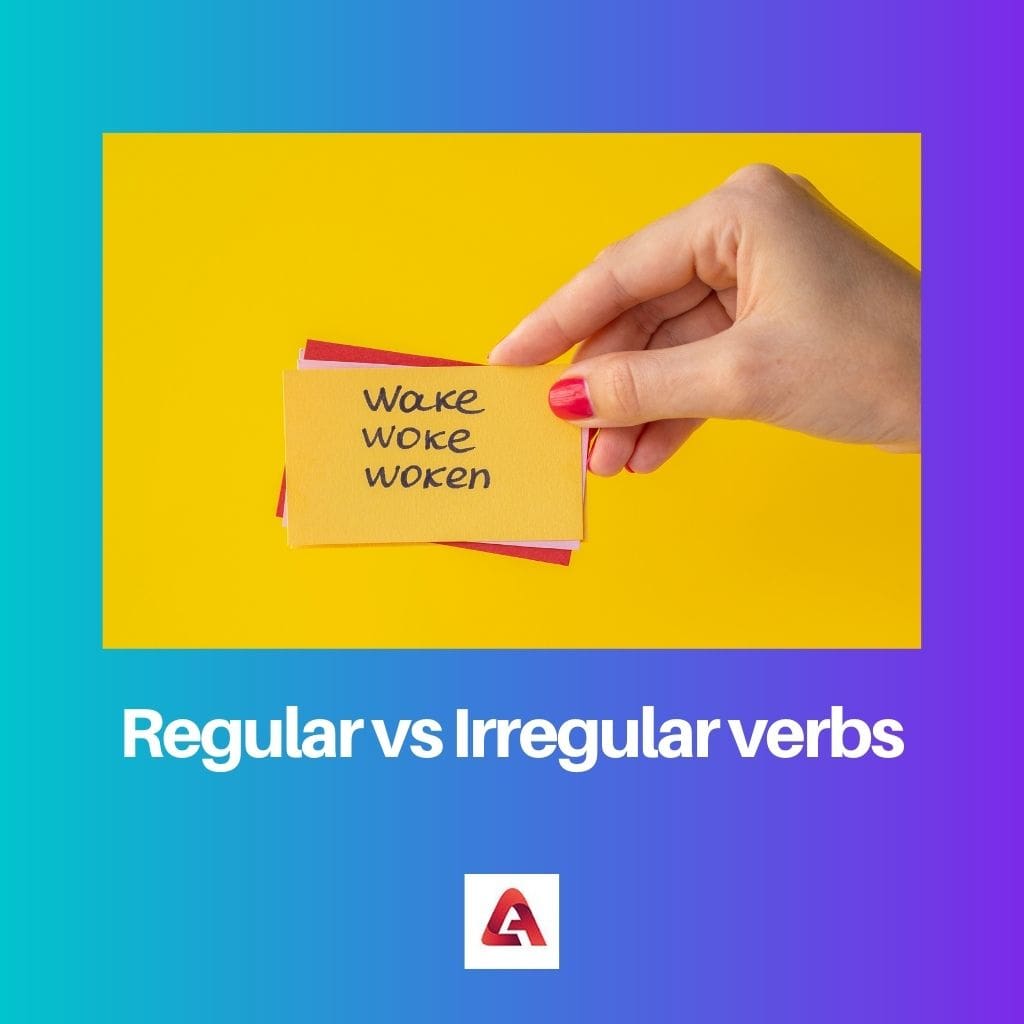Verbs are an essential part of English Grammar because they help individuals fuse words into sentences to regularly converse about different circumstances that had taken place in their lives.
In English Grammar, a multitude of verbs is regular verbs. Even so, there are a significant number of irregular verbs too.
Key Takeaways
- Regular verbs follow a consistent pattern when conjugated in different tenses, by adding “-ed” to the base form for past and past participle forms in English. In contrast, irregular verbs have unique conjugations that do not adhere to a standard pattern.
- Regular verbs have predictable endings, making them easier to learn and use, whereas irregular verbs must be memorized individually due to their inconsistent conjugation patterns.
- Both regular and irregular verbs are essential components of language, but irregular verbs require additional effort to master due to their non-standard conjugations.
Regular vs Irregular Verbs
The difference between regular and irregular verbs is that certain verbs whose past simple and past participle forms have an orderly or systematic conjugation pattern are called Regular Verbs. In contrast, several verbs whose past simple and past participle tenses either remain the same or are modified entirely without following conjugation patterns are known as Irregular verbs.

Comparison Table
| Parameter of comparison | Regular verbs | Irregular verbs |
|---|---|---|
| Meaning | Regular verbs are those verbs where the past simple and past participle of the verb ends with either a –ed or –d. For example: cook, cooked, cooked. | Irregular verbs do not have a specific formula to indicate them in their past simple and past participle. For example: cut, cut, cut or run, ran, run. |
| History | Regular verbs were found later in the English Language. | Verbs which were stemmed from Old English were irregular. |
| Pattern | Regular verbs have the conjugation (a word utilized to associate sentences) pattern. | Unlike regular verbs, Irregular verbs do not have to follow systematic conjugation patterns. |
| Past simple and past participle forms | Regular verbs don’t have to undergo crucial changes in their simple past and past participle forms as they change states. | Irregular verbs may sometimes have a different or similar past simple and past participle form. |
| Majority | There are about 600 regular verbs. Hence, there is a majority of regular verbs. | As opposed to regular verbs, there are nearly 200 irregular verbs. Hence, there are not many irregular verbs when compared to regular ones. |
| Rules | Regular verbs follow their standard guidelines to create past simple or past participles. | Irregular verbs have their own set of rules when creating past simple. |
What are Regular Verbs?
Regular verbs are otherwise known as weak words as they follow the standard principle of the English Language by adding -ed or -d to the base of the term to create its past forms. For example, play, played, played.
General rules to follow when to use regular verbs
- When the base forms of regular verbs have a verb which ends with a vowel or a consonant, except for the vowel e, the past simple and past participle tenses of that verb ends with –ed.
For example:
| Base form | Past simple | Past participle |
| Look | looked | looked |
| Tattoo | tattooed | tattooed |
For example, She looked for her son at the shopping mall.
- Regular verbs have the same past simple and past participle. When a verb ends with a consonant or a –y, we replace the –y with an –i and add –ed at the end.
For example:
| Base form | Past simple | Past participle |
| Carry | carried | carried |
| Study | studied | studied |
For example, He studied till midnight.
- When the past simple and past participle tenses of regular verbs have a verb which ends with the vowel e, we use –d at the end of the verb.
For example:
| Base form | Past simple | Past participle |
| Shape | shaped | shaped |
| State | stating | stating |
For example, She was stating her facts to the judge.

What are Irregular Verbs?
Irregular verbs are those verbs that do not end with –ed or –d. They are also known as solid verbs.
Irregular verbs are divided into four kinds:
- Verbs having the same past simple, past participle and base form
For example:
| Base form | Past simple | Past participle |
| Cut | cut | cut |
| Let | let | let |
For example, She let her friend crash at her place for the night.
- Certain base forms have similar past simple and past participle tenses.
For example:
| Base form | Past simple | Past participle |
| Make | made | made |
| Sell | sold | sold |
For example, She sold her car to her neighbour.
- Verbs have the same past participle and base form.
For example:
| Base form | Past simple | Past participle |
| Come | came | come |
| Run | ran | run |
For example, He ran after the burglar.
- Verbs have different past simple, past participle and base forms.
| Base form | Past simple | Past participle |
| Speak | spoke | spoken |
| See | saw | seen |
For example, He saw a giraffe at the zoo today. He had seen a giraffe at the zoo today.

Main Differences Between Regular and Irregular Verbs
- Regular verbs refer to those verbs where the verb ends with –ed or –d. For example: look, looked, looked. Irregular verbs are those verbs that do not follow a particular technique to indicate them. For example: put, put, put.
- Regular verbs were not used in the Olden days since they were recently introduced in English. Irregular verbs were introduced before regular verbs and derived from Old English.



